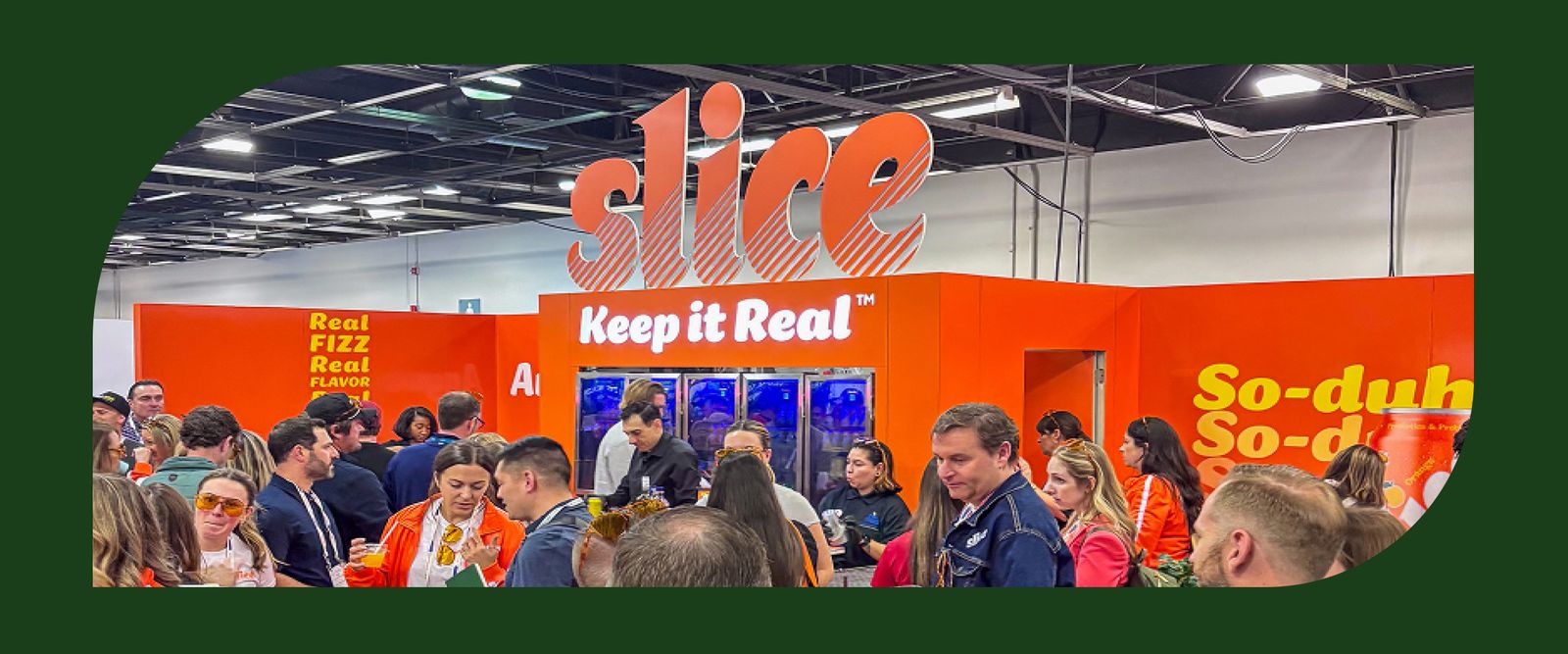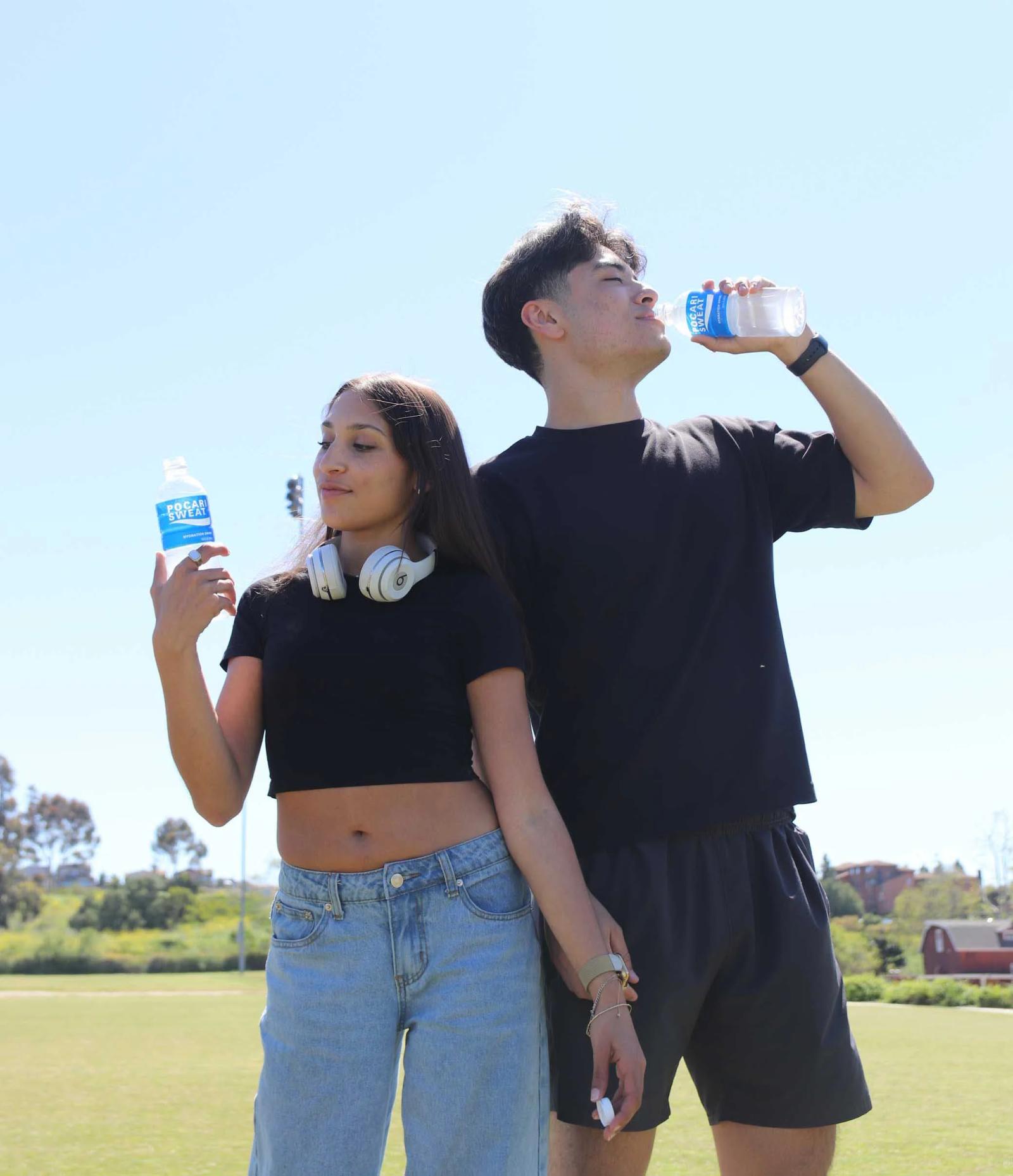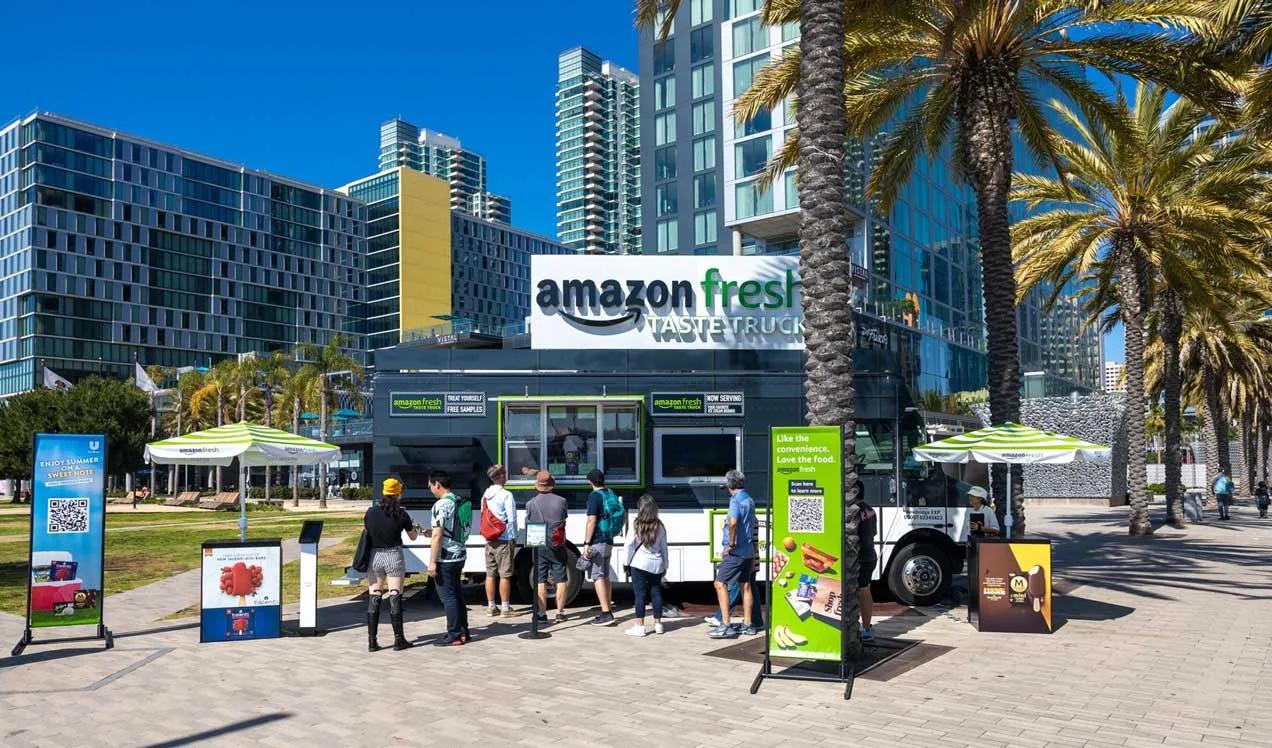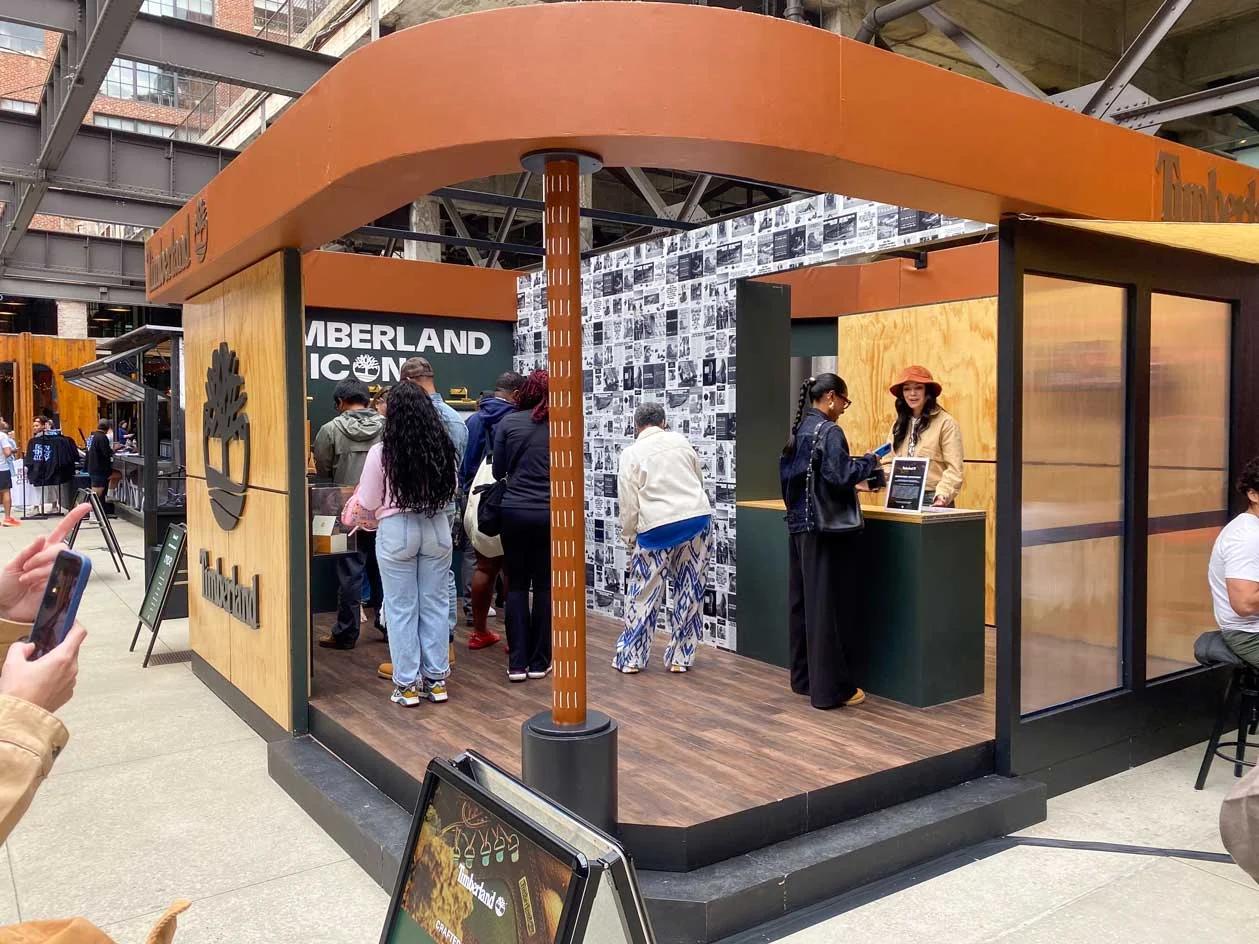
9 Benefits of Experiential Marketing
Learn how experiential marketing builds loyalty, drives ROI, and creates brand buzz9/26/2025
By T.J. Nolan
Before diving into the benefits of experiential marketing for brands, we should start with the benefits that experiences bring to people. Now in its 85th year, Harvard University has been conducting the longest study on happiness, chronicled in Dr. Robert’s Waldinger's recent book, The Good Life. Not surprising, its core finding was…..Connection.
Five years after Covid shut down events, festivals, gatherings, and one-to-one interactions, experiences are making a comeback, with many events at greater than pre-pandemic levels. According to a 2025 Harris poll, 69% of Gen Z professionals say that technology has made them feel less connected and more isolated, and 91% say that in-person events are one of the best ways to build social and interpersonal skills.
There are a lot of human reasons to create more experiences, but let's talk about the advantages of experiential marketing for brands.
Experiences sell in ways that traditional ads can’t. A 2024 report by AnyRoad shows that around 51% of consumer brands are increasing their experiential marketing investments through 2026—placing consumer experiences at the center of the brand story.
To start, experiential marketing offers the opportunity to lean on our five human senses, allowing consumers to taste, touch, smell, and truly feel it. When attending an event with others, dialogue and discussion creates further connection and shared experience with a brand.
Getting in the experiential business offers brands a path to bring the brand to life. Experiential marketing campaigns provide the ability to tell stories, longer 1-on-1 consumer interactions with the brand, and when done well, organic social sharing and UGC.
In this post, we’ll break down nine of the top benefits of experiential marketing and show you how the right marketing campaigns can help your brand drive results.
What is Experiential Marketing?
A pause for a more formal definition.
According to the American Marketing Association, experiential marketing is a strategy that immerses potential customers in memorable, interactive brand experiences to foster an emotional connection. It extends beyond passive advertising to encourage active participation and promote positive feelings toward a brand or product, ultimately cultivating brand loyalty.
It is a two-way interaction, where customers don’t just consume a message—they actively engage, leaving them with a stronger sense of connection to the brand.
Why Experiences Matter Today
Consumers are overloaded with marketing messages every single day. Recent studies show that consumer attention span is about 8 seconds, or one second less than a goldfish. It’s no wonder that most people forget the ads they’ve seen just minutes later.
Unlike traditional marketing, experiential marketing has a wide array of options, engaging consumers through live events, pop-up shops, product demos, and other hands-on activities to make an abstract brand tangible and relatable. It’s not limited to the assets of traditional advertising vehicles, only limited by the creativity of the team developing it.
Benefits of Experiential Marketing

For brand leaders seeking to maximize impact, the advantages of experiential marketing go far beyond surface-level buzz. These strategies provide tangible methods to enhance customer relationships and foster sustained growth. When done well, the advantage of experiential marketing drives a deeper, more personalized relationship with customers, resulting in increased awareness, stronger customer loyalty, new brand advocates and…….ding ding ding….sales.
Here’s how brand experiences deliver real value for today’s most ambitious brands.
1. Cutting through the Clutter
Consumers see thousands of ads every single day. Most of them get ignored or forgotten. But brand experiences break through the noise by offering something physical, interactive, and memorable.
Take Jack Link’s WILD Times Square Takeover timed with the launch of their new WILD product. Ahead of the live activation, Milestone Integrated launched a culturally relevant social media campaign to build buzz with Gen Z. Newbridge Marketing then brought the brand to life in Times Square with bold visuals reminiscent of its product packaging, high-energy engagement with enthusiastic ambassadors, visits from Sasquatch, and product sampling.
The results: 25,000+ samples distributed, 215,000 on-site impressions, 22 million billboard views, and a 15% sales surge within two weeks.
It was a great example of one of the advantages of experiential marketing— at one of the busiest places on Earth, an experience was able to cut through it all.
2. Building Connections That Last
At its heart, marketing is about relationships. People are more likely to support a brand when they feel a bond. In fact, research shows that customers who feel connected to a brand deliver 52% more lifetime value. Experiential strategies excel here because they tap into emotions such as joy, surprise, nostalgia, and pride—that traditional ads can’t replicate.
As an example, Newbridge’s college media and marketing team launched the Stanley Studio H2O College Mobile Tour, taking the brand to Gen Z where they live and play on campus. The event showcased products with brand ambassador support, and students were able to interact with a variety of product types and colors, selecting what fit their needs and personality.
Direct sales on-site created ongoing connections to the brand post-event. Students were also able to customize their Stanley with custom live engraving and participate in experiences that tied the brand to individuality, sustainability, and the community.
3. Creating Memorable Stories
People remember what they do, not what they see in passing. Cognitive research shows that individuals are more likely to retain information when it’s tied to a first-hand, active experience rather than passive observation. Active participation, like writing something down, creating, or physically interacting, strengthens memory far more effectively than simply listening, reading, or viewing.
Just look at Newbridge Marketing’s Kodiak Cakes Food Truck Tour, a multi-season, sensory program that combined campus stops, race events, and ski-resort activations. From the smell and taste of their delicious pancakes being prepared fresh, to hosting marshmallow roasts, and meet-and-greets with the Kodiak bear, the tour memorably engaged the senses of participants.
During our 8-year campaign, over 600,000 impressions were generated, more than 181,000 product samples distributed, along with thousands of Kodiak bear hugs!
If you want your brand to live in customers’ minds, nothing beats the storytelling power of experiential marketing campaigns.
4. Boosting Brand Awareness

Many marketing strategies struggle to stand out, but brand experience events thrive at generating buzz. When live events and interactive installations are done right, the reach can go far beyond those in attendance, rippling outward through media coverage and social shares.
Last year, we transformed Flatiron Plaza, one of New York City’s busiest hubs, into a wellness-inspired pop-up experience for Suja Organic. With thousands of samples, influencer activation, and interactive education stations, the one-day event distributed over 6,000 full bottle samples and generated over 1 million impressions on social.
That single activation raised awareness and positioned Suja as an innovative, experience-driven leader in health and wellness. When done right, this is one of the top experiential marketing advantages—brand experiences generate content that scales your reach far beyond the physical event.
5. Driving Social Media Buzz and Word of Mouth
If people love your event, they’ll talk about it and they do it in an organic, authentic, way. In today’s world, word of mouth spreads fastest through social media. According to a 2024 Ipsos poll on consumer behavior, 92% of consumers trust recommendations from friends and family more than traditional advertisements.
That’s why experiential marketing examples, such as Newbridge Marketing’s The North Face Nuptse Locker activation, generated so much attention online. By planting clues through student influencers on campus and social channels, we surprised students with exclusive prizing and shareable social moments. The campaign captured over 16 million TikTok views, 93,000 likes, and 7,000 on-site engagements—creating moments people couldn’t resist sharing.
Actionable tips:
- Provide photo-worthy setups and encourage user-generated content.
- Incentivize sharing by offering prizes delivered through shareworthy moments.
6. Encourages Product Trial
Sometimes the best way to sell a product is to let people try it. That’s what experiential delivers —direct, hands-on interaction to drive trial and share brand stories.
Newbridge Marketing’s Bob’s Red Mill National Food Truck Tour, which traveled across 30 states, brought the brand directly to consumers at festivals, farmers markets, and college campuses. Visitors could taste Bob’s Bars, Oatmeal Cups, and Homestyle Granolas while talking with brand ambassadors to learn more about Bob’s Red Mill and their incredible founder, Bob Moore.
The tour distributed 286,000 samples and premiums, generated 850,000 impressions, and reached consumers across 30 states.
If you’re looking for practical experiential marketing campaigns that deliver ROI, focus on activations that let people touch, test, and experience your product in action.
7. Gathering Real-Time Feedback and Insights

One valuable advantage of experiential marketing is the ability to capture feedback and data in the field in real time. For instance, Newbridge Marketing integrates analytics into its experiential campaigns by:
- Performing field surveys to understand the consumer profile of participants and assess the effectiveness of the experience and its impact.
- Providing insights on increases in purchase intent, brand advocacy, and brand equity measures.
- Leveraging additional elements such as people counting systems to track the number of participants and AI-powered voice-of-consumer research to share qualitative and quantitative insights.
By blending on-the-ground engagement with data collection and analysis, Newbridge helps brands understand what resonates and how it is impacting their marketing and business objectives. These insights help optimize future event and experience marketing strategies, giving you a competitive edge.
8. Strengthening Customer Loyalty
Winning a new customer is exciting. But keeping them is where the real profit lies. Retaining a customer costs five times less than acquiring a new one. Experiential marketing strategies are perfect for fostering loyalty. This matters because:
- Loyalty means repeat purchases.
- Loyal customers recommend your brand to others.
- Experiential campaigns reinforce brand values and create belonging.
9. Delivering Measurable ROI and Sales
Ultimately, marketing needs to demonstrate tangible results. The good news is that experiential campaigns are highly measurable. With the right tools, you can track attendance, social media impact, lead generation, and sales tied directly to events. 88% of U.S. marketers say events are a key revenue driver, 90% say events help them stand out, and 89% say events are critical for growth.
Pro tips:
- Limit and set clear objectives (awareness, perception change, lead generation, sales, etc.).
- Develop the measurement plan, model projections, and adjust plan before campaign launch
- Build in data collection to support the brand’s CRM for future remarketing.
Experiential Marketing Examples to Inspire You
Here are a few more standout examples of Newbridge Marketing’s experiential marketing to spark ideas for your own campaigns:
- Amazon Fresh x Unilever Taste Truck Tour: A Southern California activation that handed out 70,000 ice cream samples, delivering 108,000 impressions and a 7x ROI.
- Pocari Sweat Student Ambassador Program: A statewide experiential campaign with mobile tours, sampling vans, and campus activations that distributed 137,000 samples and generated 408,000 impressions.
- Slice Brand Relaunch at Trade Shows: A vibrant booth design paired with chilled product sampling that drew steady traffic and highlighted the brand’s fresh new identity.
- Timberland Pop-Up at Ponce City Market: An immersive event featuring brand history and storytelling, live footwear demos, music, digital gamification, and giveaways that captured attention and drove buzz.
Partner With Newbridge for Experiential Campaigns
Knowing the benefits of experiential marketing is one thing—bringing them to life is another. That’s where Newbridge comes in.
We specialize in creating branded experiences that not only look good on social media but also drive sales, loyalty, and measurable ROI. From college campus activations that reach over 15 million students, to large-scale marketing campaigns with national reach, we’ve helped brands like Amazon Fresh, Stanley193, and Timberland connect with their audiences in meaningful ways.
Connect with Newbridge Marketing to turn your next experiential idea into measurable results.
Related Content
How to Do a Pop-Up Shop Successfully for Your Brand
Newbridge Named One of Chief Marketer’s Top Marketing Agencies for 2025
Newbridge Marketing named a Top Marketing Agency of 2025 for standout experiential and college marketing that drives real connection.
Mobile Marketing Tours: 8 Smart Ways to Maximize ROI
Discover how to maximize ROI with mobile marketing tours. Learn 8 examples to boost engagement, awareness, and sales.

